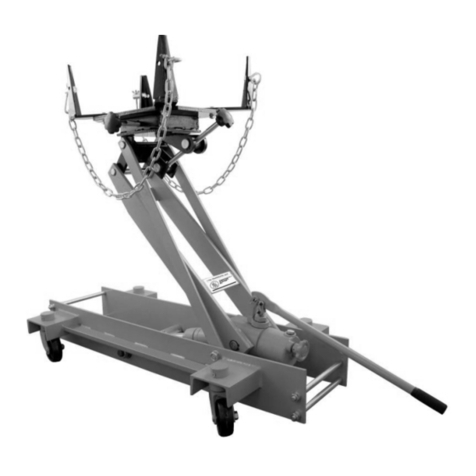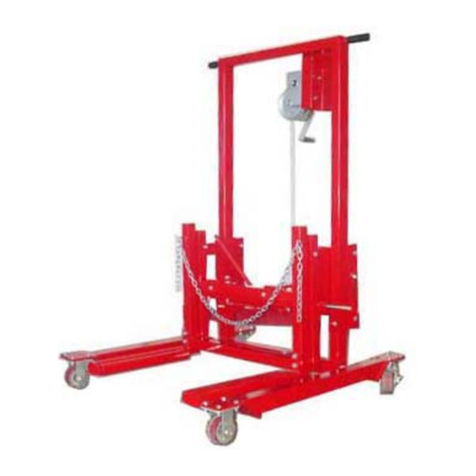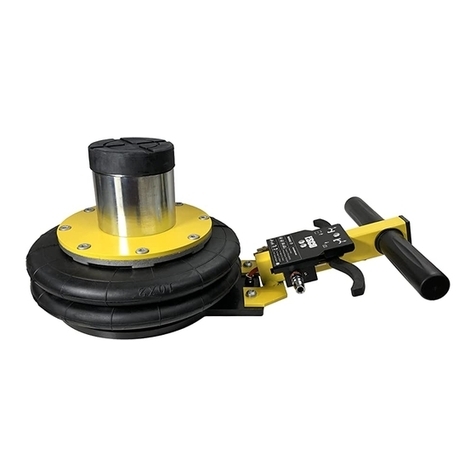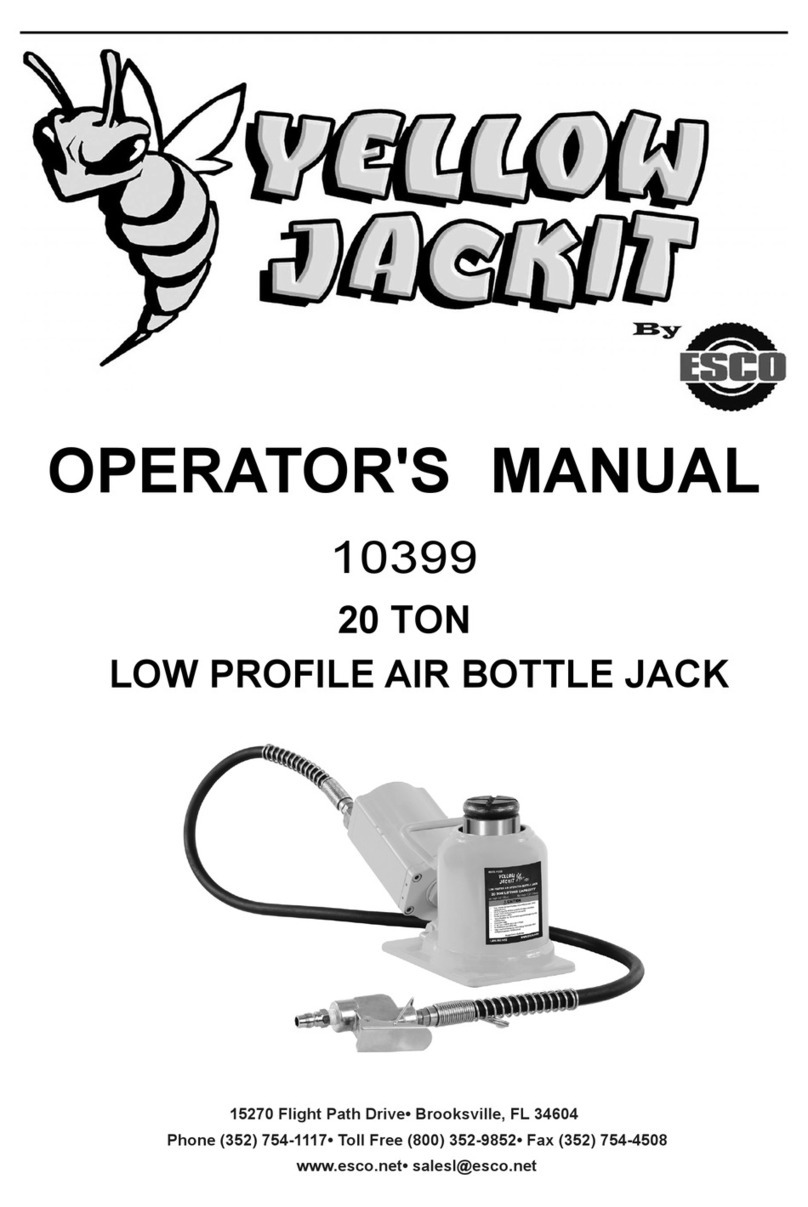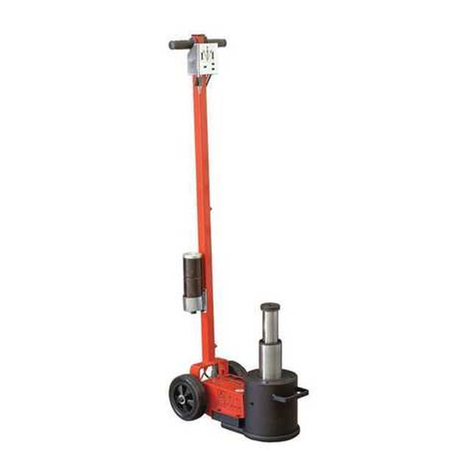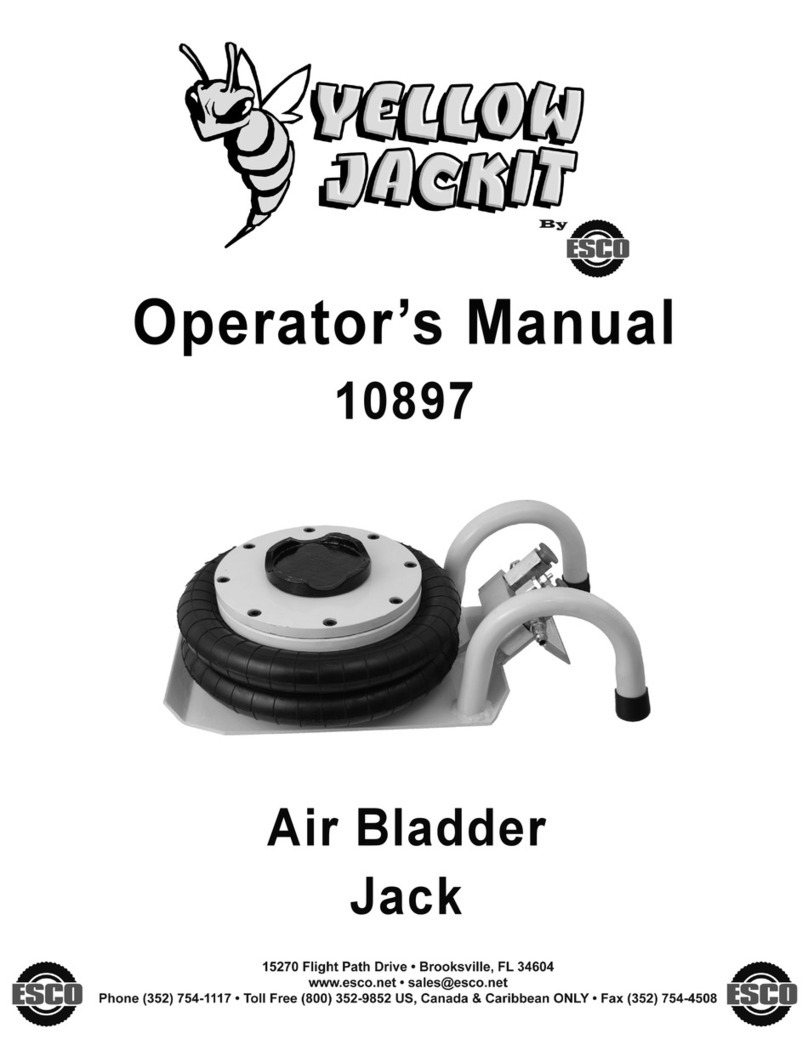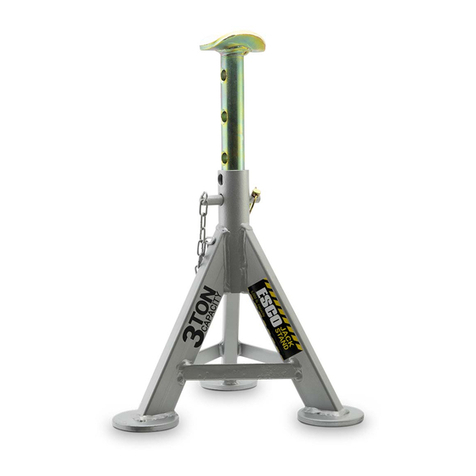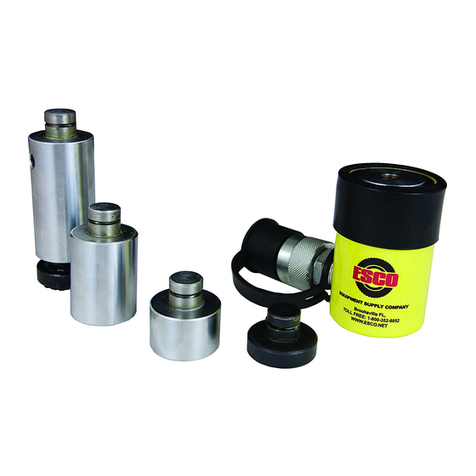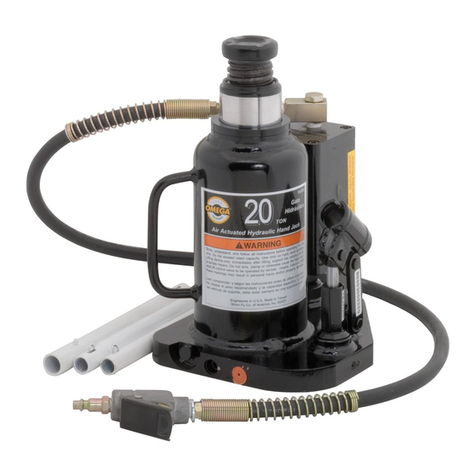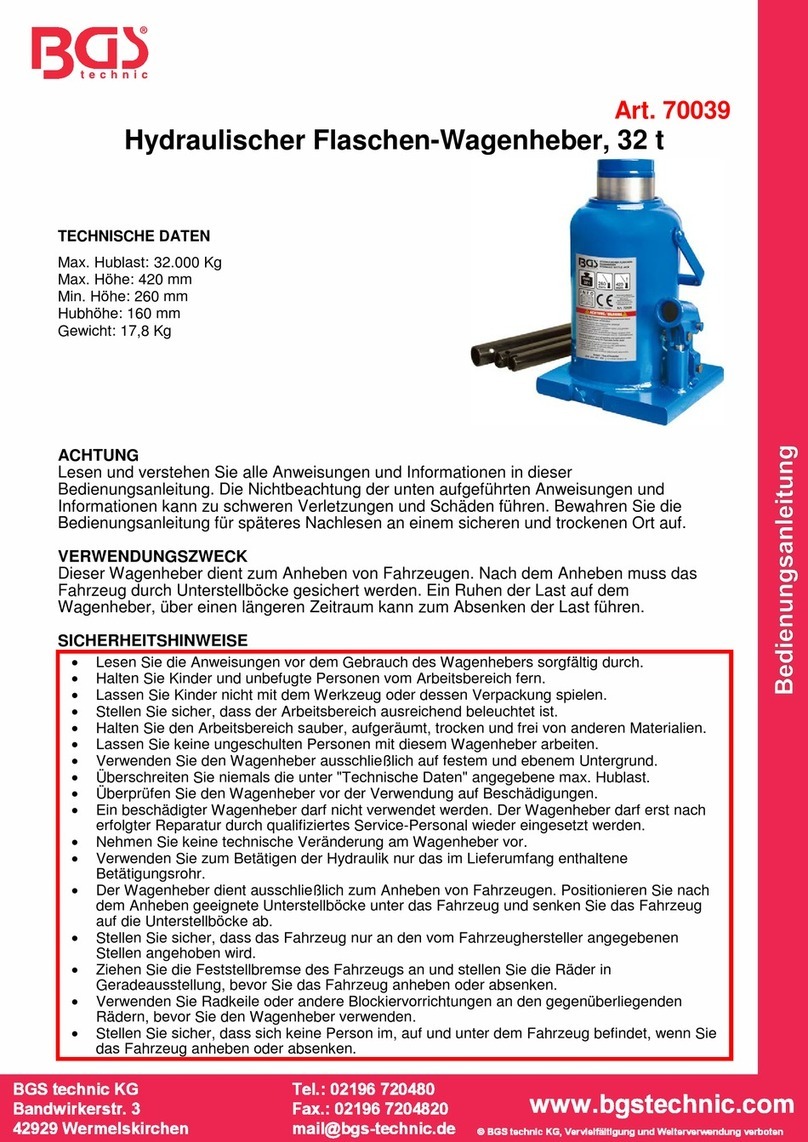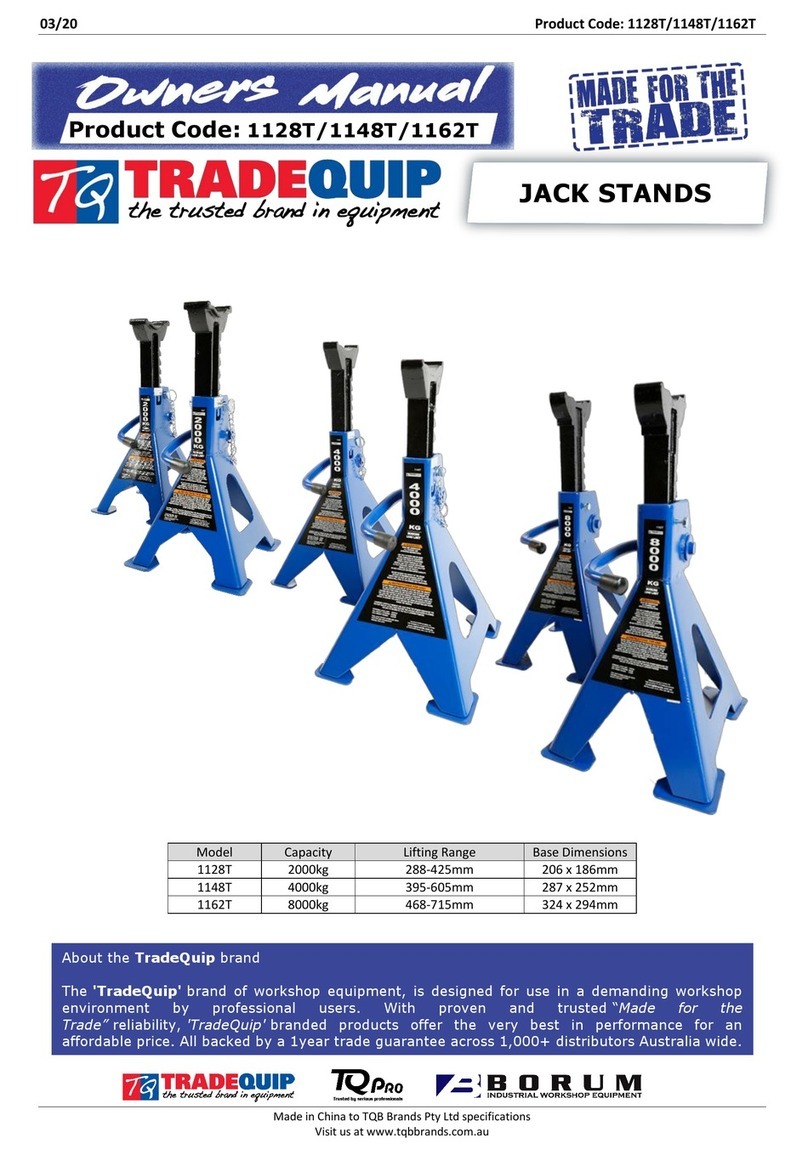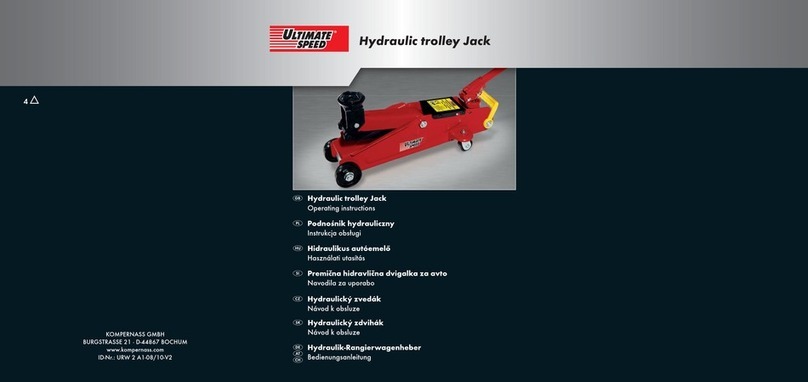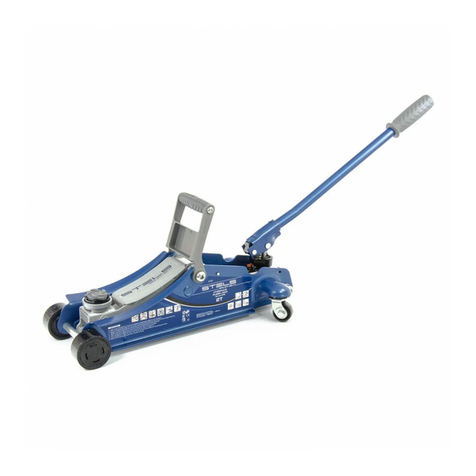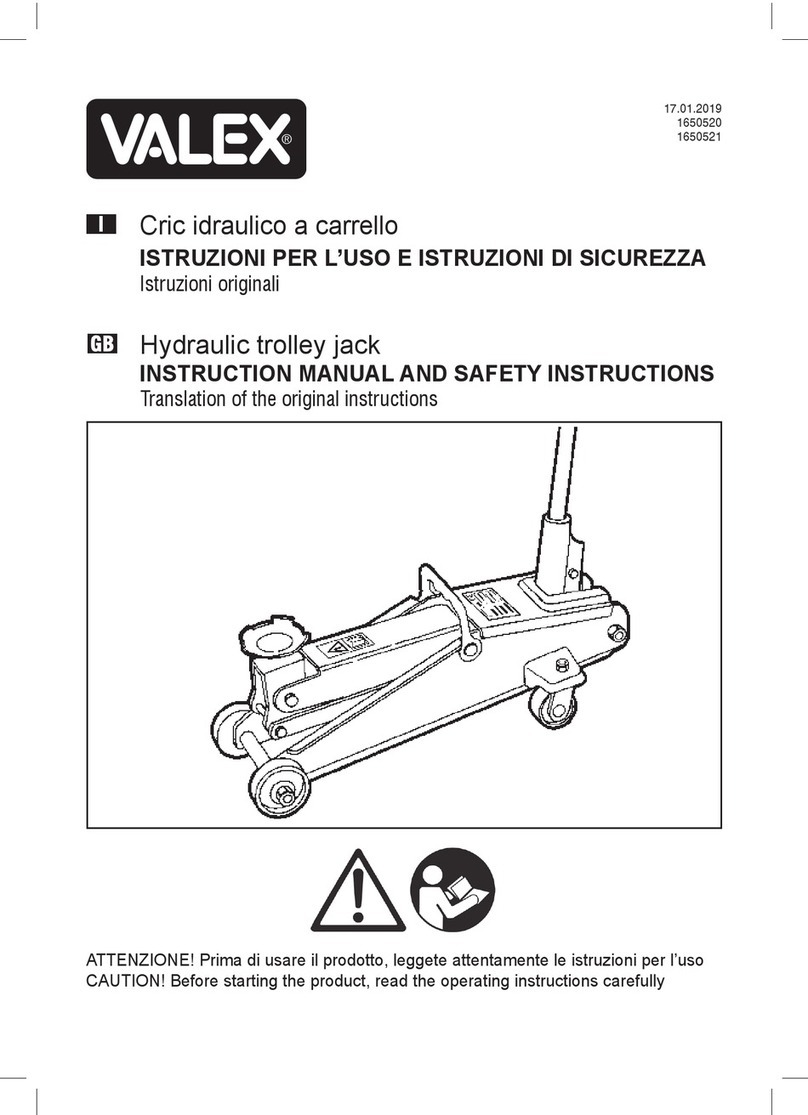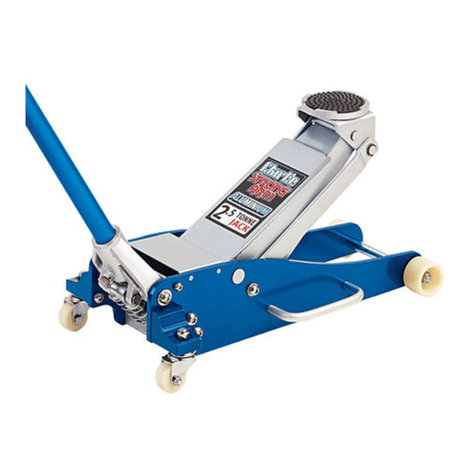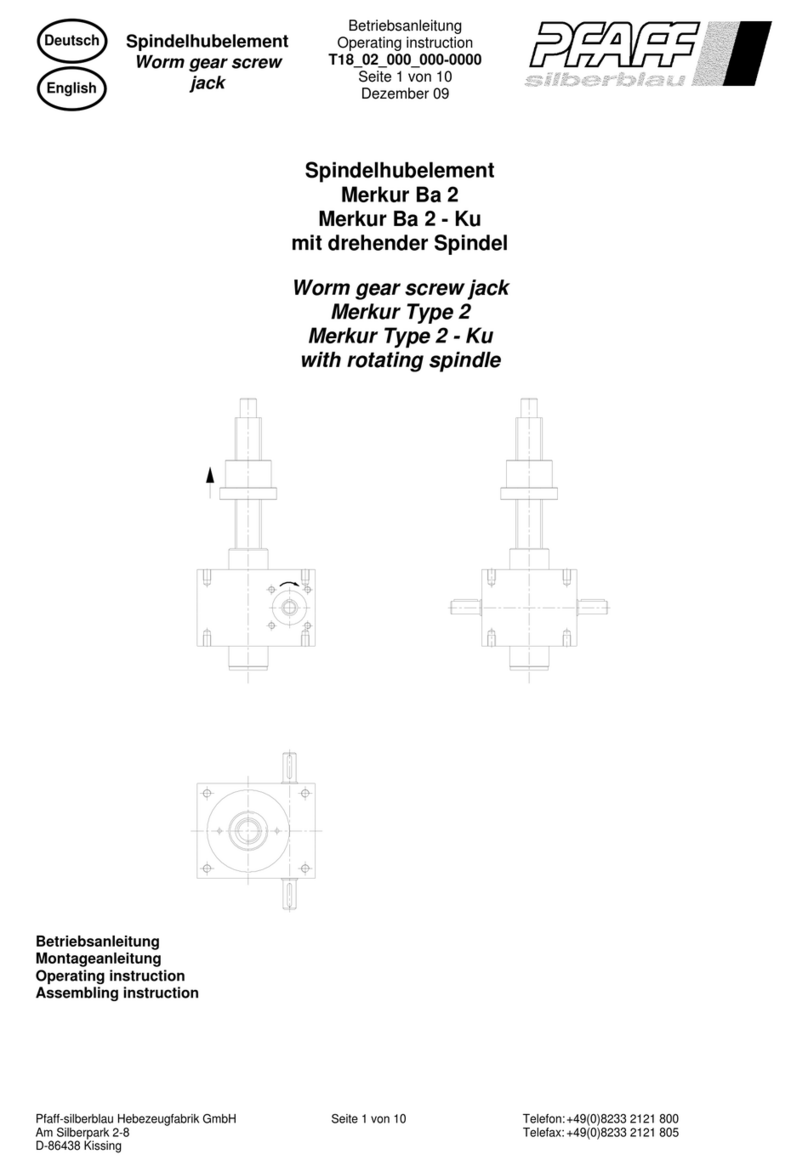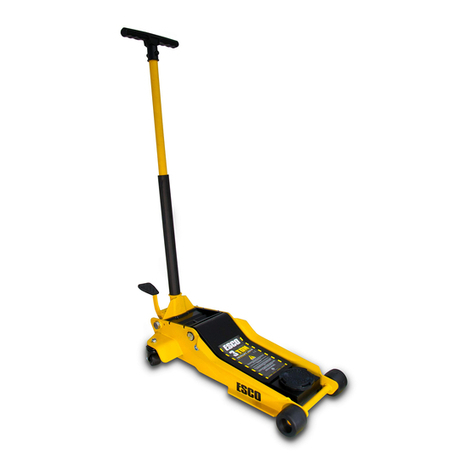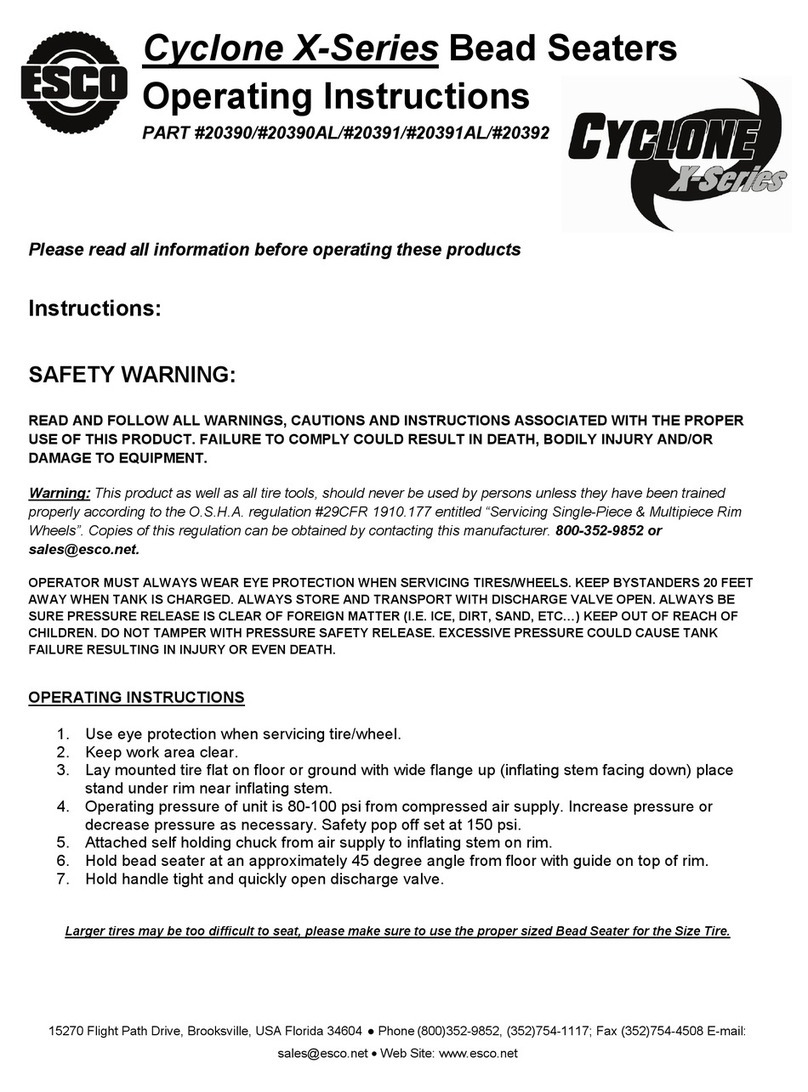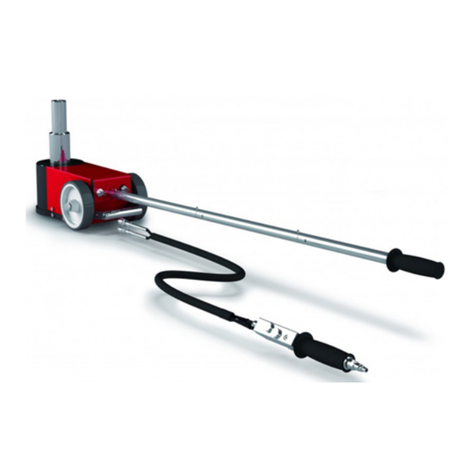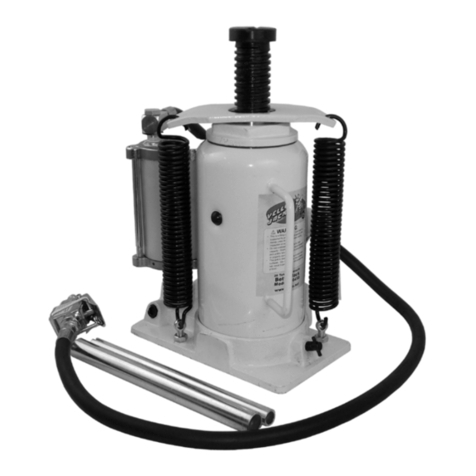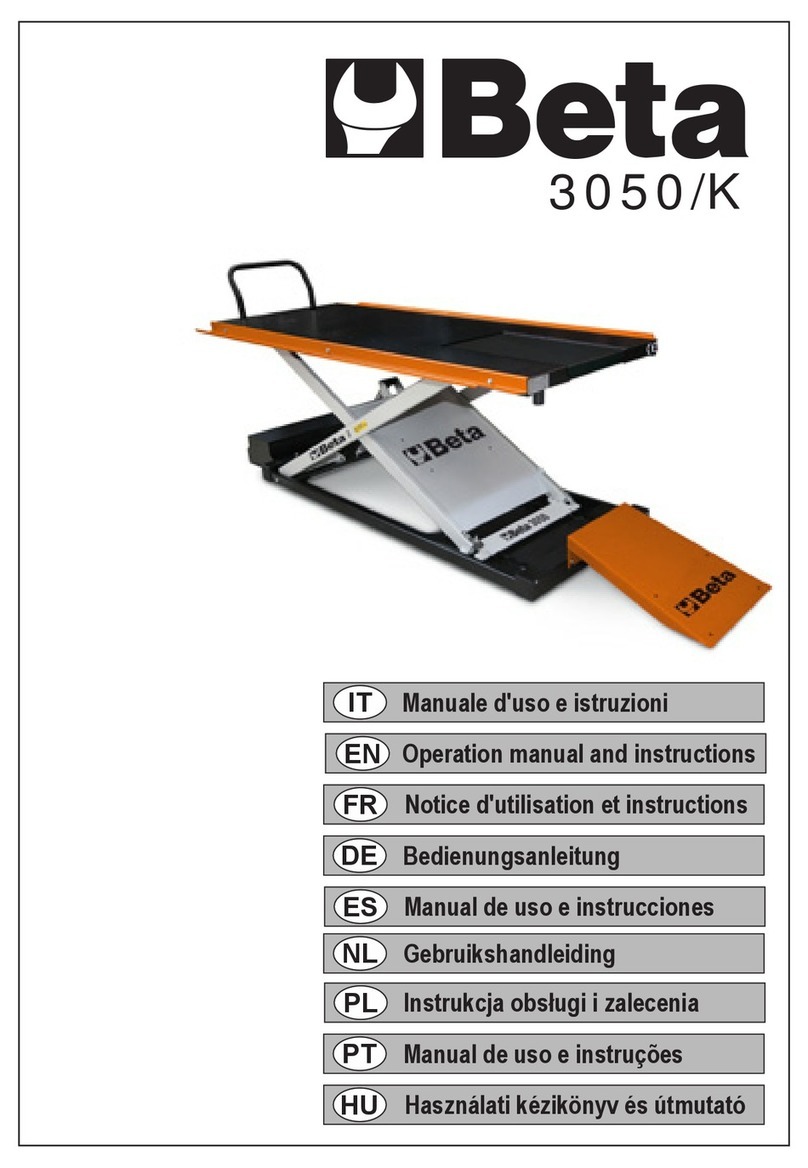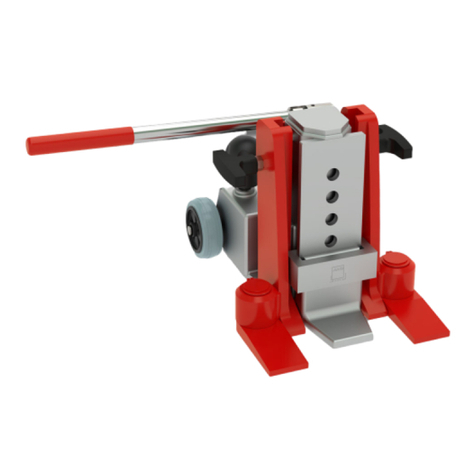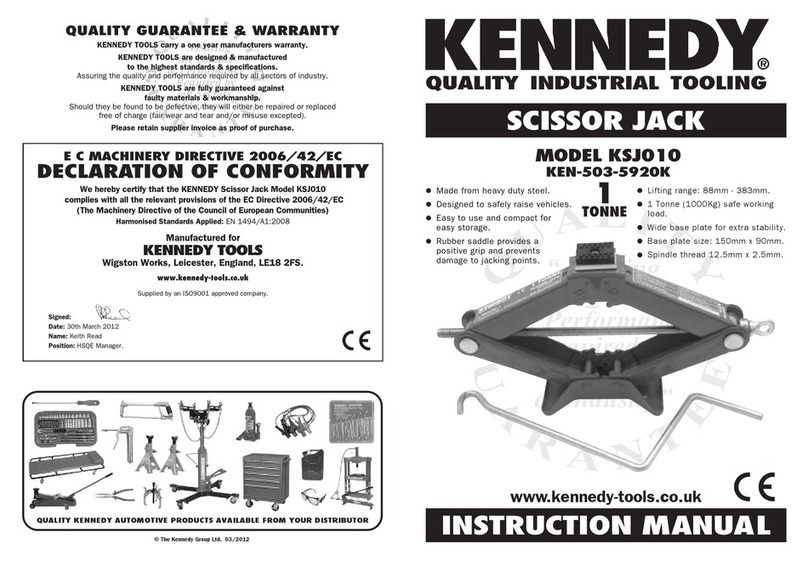
THE MOTOR WILL NOT START, OR IT RUNS BADLY.
- Check that the air supply line is not choked. - The seals (1101) are worn, replace them! - The seals (1101) fitted
on the piston (1102) have difficulty in sliding: both the cylinder and the ram have to be dismantled and lubricated.
THE JACK DOES NOT LIFT THE LOAD.
- Check the oil level by means of the screw (1401). - There is dirt underneath the valves : remove the casing, close
the tap 843, turn the jack over so the cylinder is horizontal and the motor pump vertical, loosen the cap (518),
remove the bearings and springs and blow inside to thoroughly clean it. Next, reassemble and if necessary knock
the bearings again (40) and (521), repeat the bleeding operation illustrated on the previous page and put the jack
back into its normal position and reopen the tap. - Check the hydraulic block (1152), paying special attention that
the pistons (89) and (264), which control opening and closing of the descent valves, have not become rigid, in which
case dismantle them and grease them.
THE JACK LIFTS, BUT COMES DOWN UNDER THE LOAD.
- Dismantle the assembly (1152) and check that under the valves (40) and (83) there are no impurities, then, after
carefully cleaning, readapt the pin (83) in its seat with a light blow with a hammer. If it is not possible to obtain a
seal on the pin, replace the valve (KIT0265) complete with the pin (83). If the load still falls even after fitting the
jack, carry out the following step. - Completely drain the tank and the cylinder of oil, loosen the cylinder and check
the washer (210); if it is damaged, replace it. Refit everything and tighten the cylinder. Fill the oil tank with oil to the
required level; operate the jack a couple of times without the load; bleed and then top up the oil level when the
pistons are lowered.
THE RAMS FAIL TO GO BACK IN COMPLETELY EVEN WITH THE LEVER IN THE
DESCENT POSITION.
Check the suction-pump (935) and check that the piston (130) slides well: it is a good idea to grease or lubricate it;
unscrew and, if necessary, clean the silencer (267), then screw it back down.
OIL LEAKS
- If the jack expels oil from the silencer (1109), it means: the pumping element (1104) is scored or damaged and
must be replaced; the seal (1106) is worn and must be replaced. - Oil leaks from the suction pump (935): check for
the excess oil in tank. If the jack has been turned upside down or damaged the leak will soon stop; - If oil is leaking
from the silencer (267) and point B has failed to solve the problem, you must check the integrity of the hydraulic
block (1152): replace the seals (90) and (26). If the leak still persists, replace the whole unit (1152).
7
